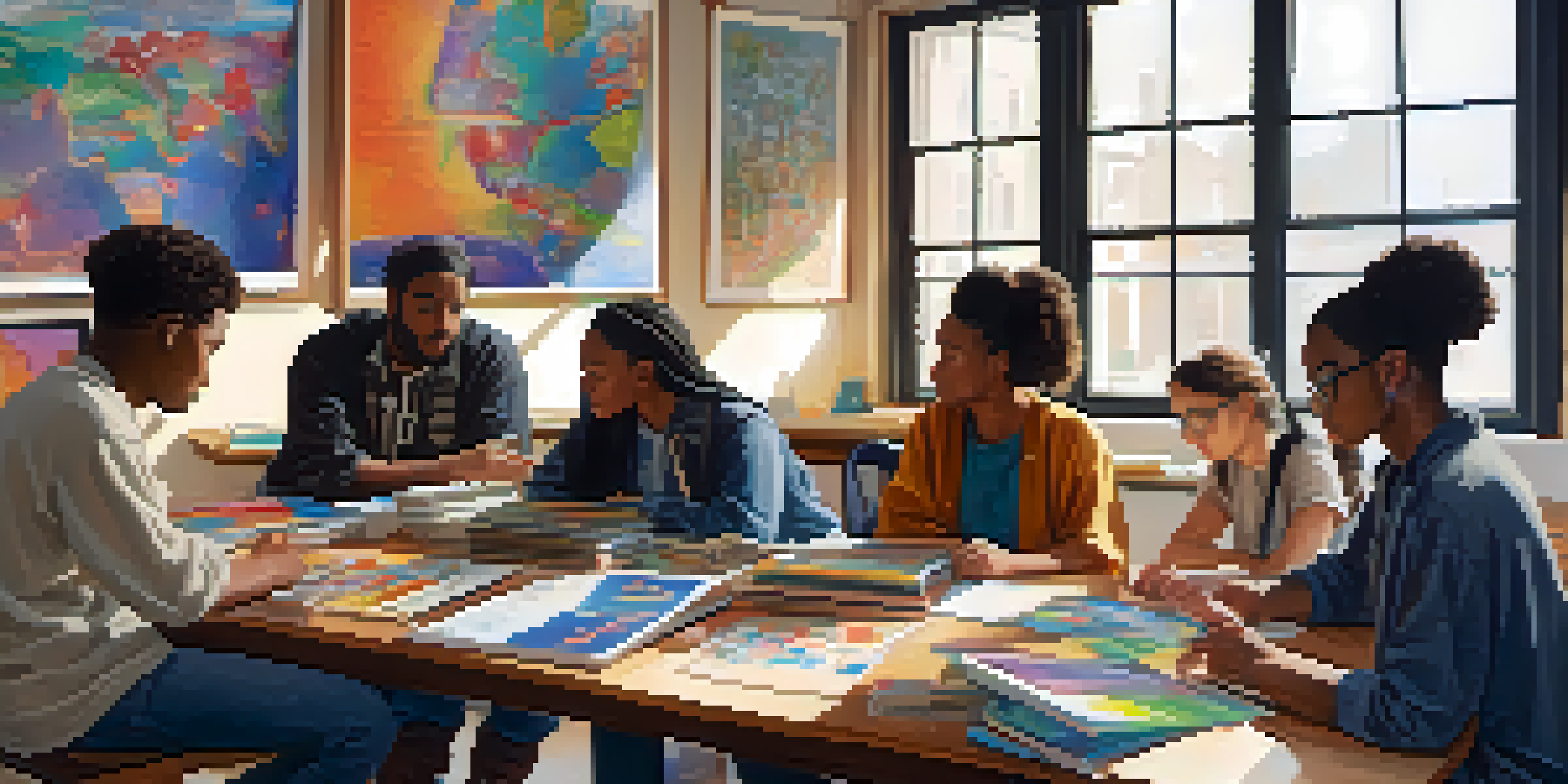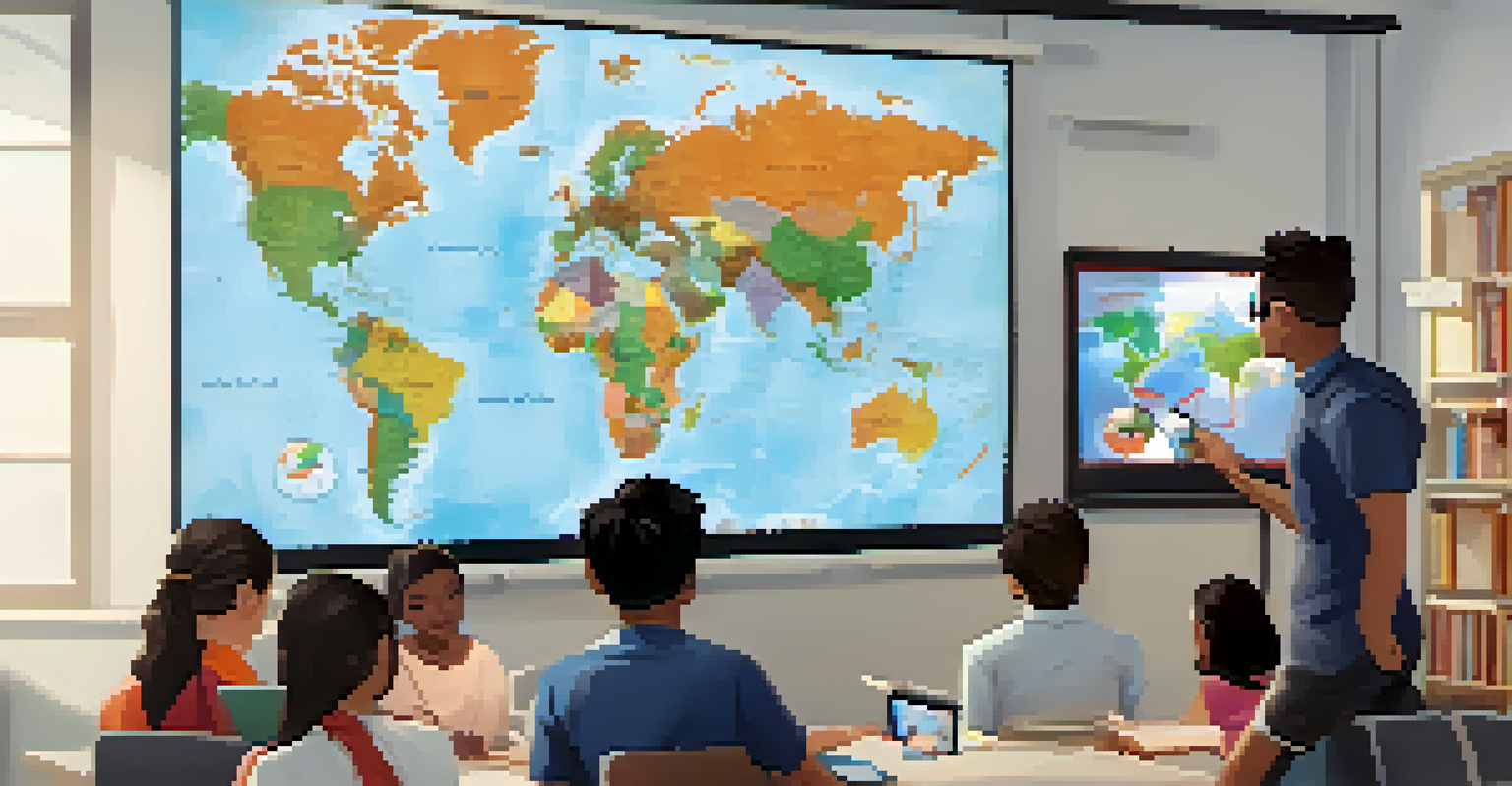Developing Global Mindset in Students Through Education

Understanding Global Mindset and Its Importance
A global mindset refers to the ability to understand and appreciate diverse cultures, perspectives, and practices. In our increasingly interconnected world, fostering this mindset in students is essential. It not only prepares them for global citizenship but also enhances their problem-solving skills and creativity.
The world is a book, and those who do not travel read only one page.
Imagine a world where students can collaborate seamlessly with peers from different backgrounds, sharing ideas and innovation. This is the essence of a global mindset. By understanding various cultural nuances, students can approach challenges with a broader perspective, leading to more effective solutions.
Moreover, a global mindset encourages empathy and respect for others. As students learn to navigate different viewpoints, they become more adaptable and open-minded, qualities that are crucial in today's diverse workplaces.
Integrating Global Issues into the Curriculum
To develop a global mindset, educators can incorporate global issues into the curriculum. Topics like climate change, human rights, and international relations can spark meaningful discussions and critical thinking. By engaging with these issues, students learn to analyze situations from multiple angles.

For instance, a geography lesson on climate change can include case studies from various countries. Students can explore how different cultures are affected and how they respond to these challenges. This not only enriches their learning experience but also encourages them to consider the global implications of local actions.
Global Mindset Enhances Problem-Solving
Fostering a global mindset equips students with diverse perspectives, leading to more effective solutions in a complex world.
Furthermore, integrating global issues fosters a sense of responsibility among students. They begin to see themselves as part of a larger community, inspiring them to take action and advocate for positive change.
Encouraging Cross-Cultural Exchanges
Cross-cultural exchanges, whether through student exchange programs or virtual collaborations, are invaluable for developing a global mindset. These experiences allow students to immerse themselves in different cultures, fostering understanding and appreciation. By interacting with peers from diverse backgrounds, students can break down stereotypes and build lasting relationships.
We do not inherit the earth from our ancestors, we borrow it from our children.
Consider a virtual pen pal program where students exchange letters with peers from another country. This simple act can spark curiosity about different traditions, languages, and lifestyles, broadening their horizons. Such interactions not only enhance communication skills but also cultivate a sense of global community.
Additionally, these exchanges encourage students to think critically about their own culture. As they share their experiences and perspectives, they may discover new ways of viewing the world, enhancing their overall worldview.
Promoting Language Learning as a Gateway
Language is a powerful tool for connecting with others, and promoting language learning can significantly contribute to developing a global mindset. By learning a new language, students gain access to different cultures and ways of thinking. It opens doors to understanding diverse worldviews and fosters deeper connections with people from various backgrounds.
For example, a student learning Spanish might discover the rich history and traditions of Spanish-speaking countries. This experience can ignite a passion for cultural exploration, encouraging them to travel or engage with communities that speak the language. Language learning also enhances cognitive abilities, making students more adaptable and innovative.
Service Learning Builds Empathy
Engaging in service learning connects students with diverse communities, enhancing their understanding and compassion for global challenges.
Moreover, bilingual or multilingual students often act as cultural bridges, helping to facilitate conversations and understanding among diverse groups. This ability not only enriches their personal experiences but also prepares them for a global workforce.
Utilizing Technology to Connect Globally
In today’s digital age, technology plays a crucial role in connecting students across the globe. Online platforms and social media allow for real-time collaboration and communication, making it easier than ever to engage with peers worldwide. Educators can leverage these tools to create collaborative projects that bring together students from different cultures.
For instance, a classroom project could involve students from various countries working together on a research topic using video conferencing tools. This not only enhances their teamwork skills but also helps them appreciate diverse perspectives. Technology can thus serve as a bridge, linking students in meaningful ways.
Additionally, virtual field trips can transport students to different parts of the world without leaving their classrooms. This exposure broadens their understanding of global issues and cultures, enriching their educational experience.
Encouraging Critical Thinking and Open Dialogue
Developing a global mindset also requires fostering critical thinking and open dialogue among students. Encouraging them to question assumptions and engage in respectful discussions about diverse perspectives is crucial. This approach not only enhances their analytical skills but also teaches them the value of listening to others.
For example, classroom debates on global issues can stimulate critical thinking. Students can explore various viewpoints, providing them with the opportunity to articulate their thoughts while considering alternative perspectives. This practice cultivates a respectful environment where diverse opinions are valued.
Technology Links Students Globally
Leveraging technology allows students to collaborate across cultures, enriching their educational experiences and fostering a global community.
Moreover, open dialogue encourages students to express their beliefs while remaining receptive to others' ideas. This balance of conviction and openness is essential in navigating the complexities of our global society.
Building Empathy Through Service Learning
Service learning is an effective way to instill empathy and a sense of global responsibility in students. By engaging in community service projects, students can connect with individuals from diverse backgrounds and understand their challenges. This hands-on experience fosters compassion and encourages students to think about their role in the global community.
For instance, participating in a project to support refugees can open students' eyes to the realities faced by displaced individuals. As they work alongside these communities, they gain insights into different cultures and life experiences, which enhances their empathy and global awareness.

Additionally, service learning encourages students to reflect on their own privileges and responsibilities. This reflection can inspire them to take action, whether locally or globally, advocating for positive change in their communities.